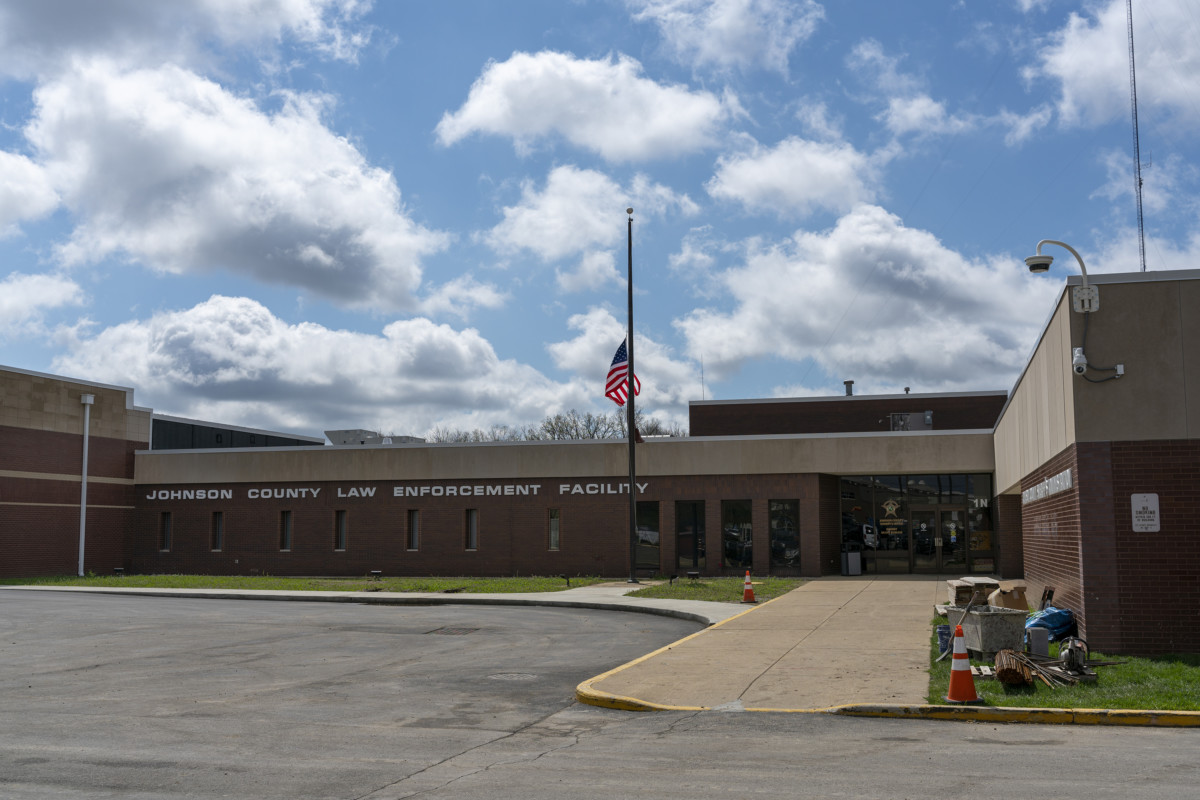A widespread vaccination effort began Monday at the Johnson County jail, days after eight inmates tested positive for COVID-19.
The jail has been on lockdown since Sunday, Sheriff Duane Burgess said.
Three inmates reported COVID-19 symptoms last week. They were given rapid tests at the jail and tested positive, Burgess said.
Three positive cases met the state’s threshold for large-scale testing, so Burgess called in help from the Johnson County Health Department, said Betsy Swearingen, health department director.
The health department provided additional rapid tests from the county’s supply to test all inmates who wanted one. About 255 of the jail’s 340 inmates on Saturday consented to a test, and five additional inmates tested positive. All of the inmates who tested positive were separated from the general population.
During a lockdown, only essential personnel may enter the jail, and there are restrictions on non-essential movement within the facility. Jail officials will rely on medical advice to determine how long the lockdown should remain in place, Burgess said Monday. The jail will continue to accept new inmates or transfers from other facilities, but will continue its quarantine procedures to prevent further spread, he said.
The jail’s health care provider is administering Johnson and Johnson vaccines Monday and today. Quality Correctional Care, a Muncie-based health care company that provides care to Indiana correctional facilities, brought in additional staff to get vaccines into arms quickly, Burgess said.
The vaccination program has been planned for some time. Coincidentally, it is falling days after the new outbreak started, he said.
Up to 400 vaccines were available to inmates and staff, but just 58 inmates — 17% of the population on Monday — consented to a vaccine, Burgess said.
“That’s troubling. We are trying to offer something good to help folks. I don’t know why they wouldn’t want it,” he said.
Staff who still need vaccinated will have access to some of the remaining vaccines, but most will go to other facilities that work with Quality Correctional Care, Burgess said.
Burgess does not know how many staff members are vaccinated, and has not asked employees to share that information with him. It is a private medical decision, he said. Burgess is fully vaccinated, and has shared information about how to get vaccinated with employees, he said.
Vaccines will also be available to newly booked inmates. Inmates will have the option to get a vaccine during their initial medical exam if they choose.
Until this week, inmates did not have access to the vaccine. They were not allowed to leave the jail to get a vaccine, and the health department did not have enough supply to share with the jail, Swearingen said.
Some health departments around the state have provided vaccines to their local jails, but there was too much public demand for the vaccine in Johnson County to offer it before now, Burgess said.
It is unknown how the virus entered the facility, he said, noting it could have easily been brought in by either an employee or an inmate. Another possibility is COVID-19 fatigue that is seen inside and outside the jail.
“People are tired right now. People in the jail are (also) worn out with the masks and the restrictions, and my staff is battling that too,” Burgess said.
This is the second outbreak at the jail. Last May, 104 of the then 231 inmates tested positive.





